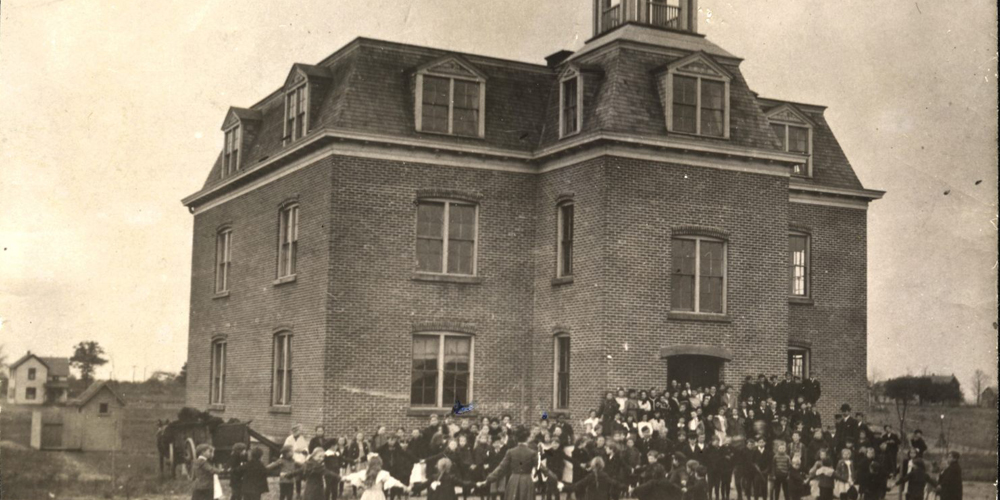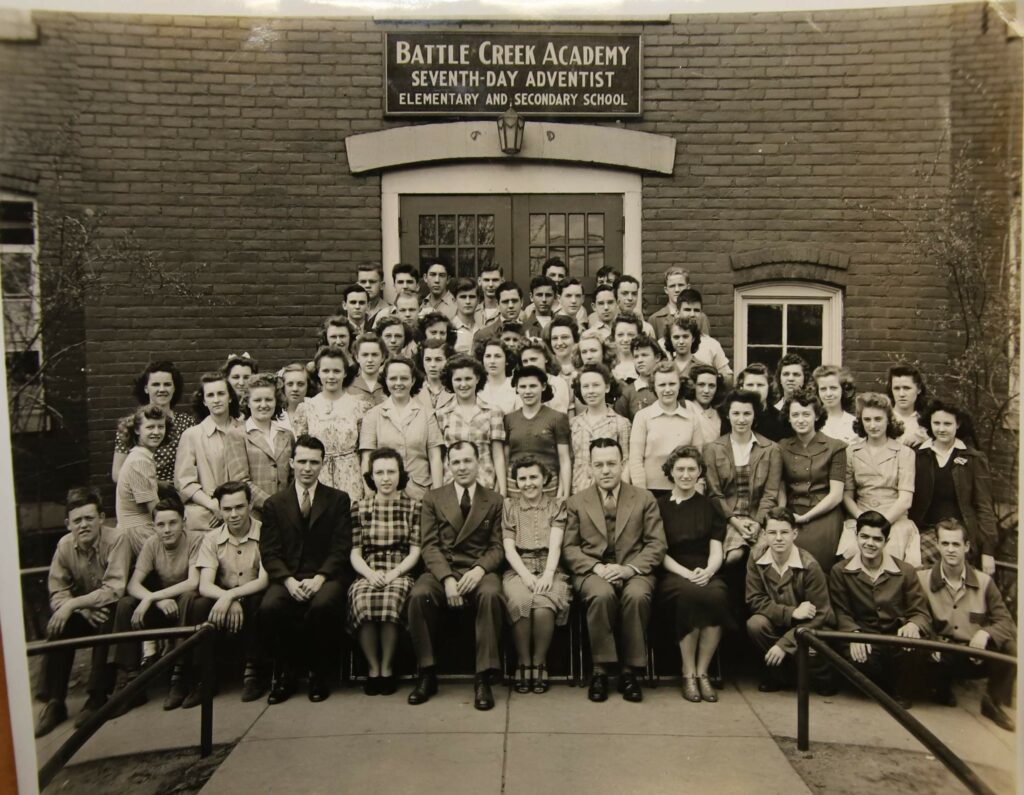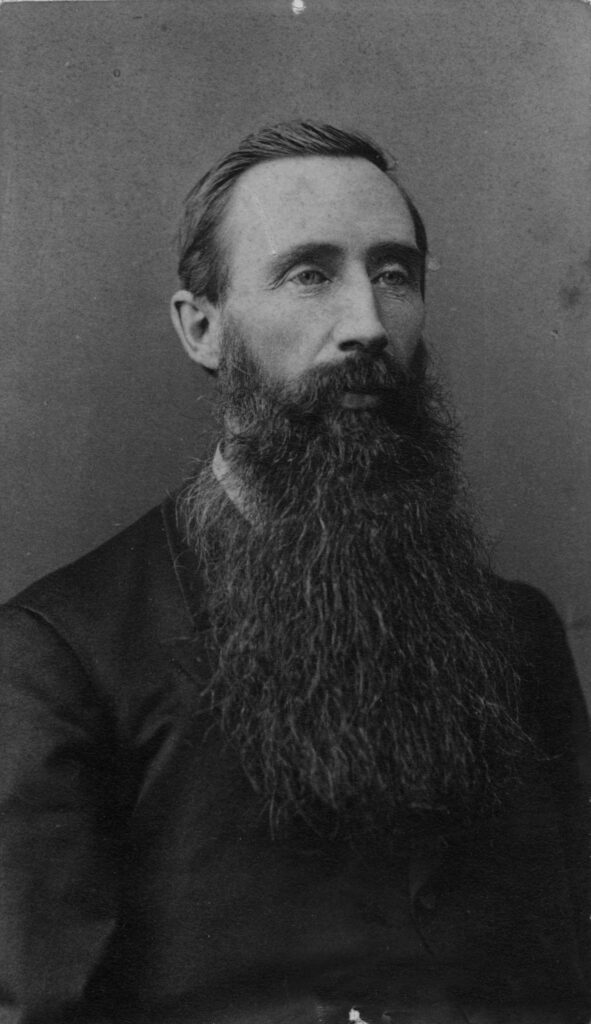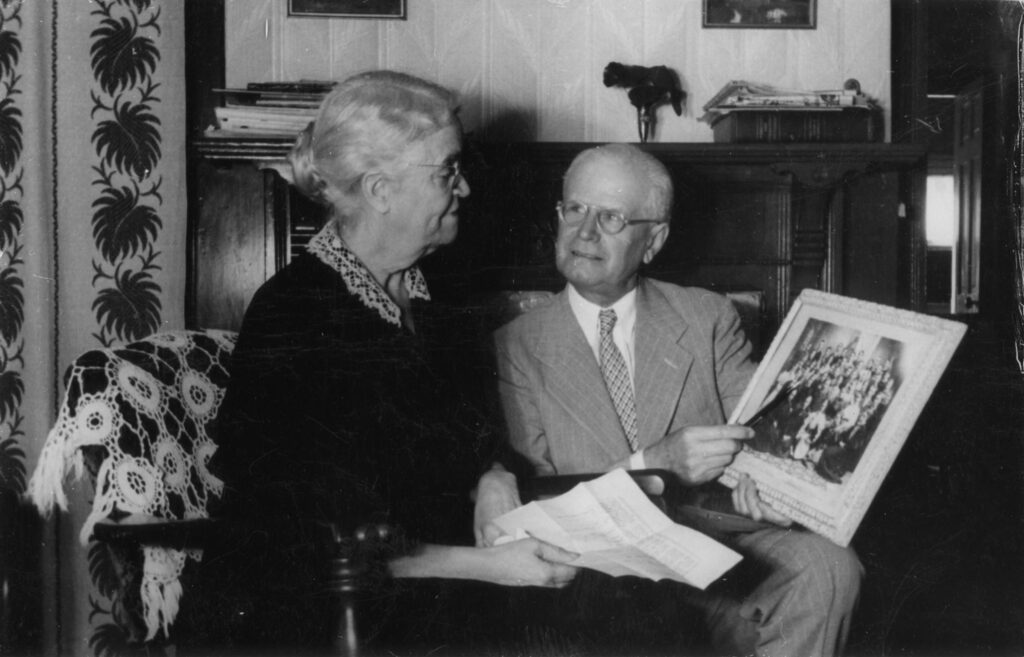Battle Creek Academy’s 150 years tell the story of Seventh-day Adventist education.

A young widower with four young daughters — largely self-educated, newly introduced to the Seventh-day Adventist Church, and a recent patient of the Western Reform Health Institute (forerunner of Battle Creek Sanitarium) — might seem like an unlikely teacher to launch a worldwide, denominationally sponsored education system. Yet Goodloe Harper Bell, who took up the challenge in 1867, is considered the first of the denomination’s sponsored teachers. By 1872, the denomination’s leaders voted to officially support Adventist education.
Up to that time, Adventists, for the most part, did not seriously consider formal education. Some fully opposed it. This did not negate that others had tried with homeschools to educate as far back as 1853 with Martha Byington teaching in Bucks Bridge, New York.
The slender, humbly attired, long-bearded educator, Bell, who started his teaching career at a one-teacher country school at age 19 after a short stint at Oberlin College in Ohio, didn’t apply for the task even though he was out of work. It seems some young boys who wanted school learning begged him. It was Willie White who, while not keen on learning English, ended up as the one to challenge Bell to be their teacher. Thus, private tutoring began on the first floor of the Review and Herald Publishing building. With that meager start, Bell’s Select School grew into Battle Creek College, which included elementary and high school classes; its college classes were moved to Berrien Springs in 1901, becoming at first Emmanuel Missionary College, and now Andrews University. The elementary and high school levels expanded into a 13-grade school in Battle Creek and today celebrates the one-hundred-fiftieth year of the Seventh-day Adventist education system in 2022.

Some of Bell’s first students were two of James and Ellen White’s sons, Willie and Edson. In 1871, their mother was given a vision about Bell “in connection with the cause and work of God in Battle Creek” (White, Testimony to the Church at Battle Creek, p. 1). She both commended and reproved Bell, and took into consideration, as she asked others to do, that he was new in the faith and that he fell into discouragement. She admonished him to return to his original enthusiasm. White actually felt that Bell was underappreciated.
Others of those first students became some of the best-known denominational leaders: John Harvey Kellogg; his brother, William Keith Kellogg; Homer Aldrich; E. R. Jones; E. C. Loughborough; and J. Byron Sperry.
Wholistic Education
Bell’s approach to education fits the description of “wholistic” — that of educating the mind, body, and spirit. What he learned at Oberlin College (which taught education reform), combined with his newly found spiritual life as a Seventh-day Adventist, pointed him to urge practical education for the entirety of a student’s being. Thus, the cornerstone for his service as a Christian teacher: moral character development.
His specialty in the classroom part of education was English. He wrote texts and taught grammar, rhetoric, and literature. His books and his teaching methods were highly lauded, although his strictness was not as appreciated. Ellen White, however, admonished that discipline is needed to effectively educate.
Bell also developed the first Seventh-day Adventist correspondence school. His contributions for including all aspects of educating the church as well as the school seem remarkably endless, as one contemplates what he taught and produced long before the age of technology.

Even in retirement, Bell founded and edited the Sabbath-School Worker. He also edited The Fireside Teacher, dedicated “to the moral and educational benefit of the Christian home” (https://digitalcommons.andrews.edu/cgi/viewcontent.cgi?article=1522&context=dissertations). He believed that education included the home circle. And he wrote many texts. He emphasized Bible-based education. Both James and Ellen White also realized the need for a college to prepare well-educated ministers to serve. Ellen especially noted the importance of teaching physiology to balance knowledge in the other subjects. She stressed the importance of understanding how to be good stewards of our bodies by saying, “True education . . . is the harmonious development of the physical, the mental, and the spiritual powers” (True Education, p. 9).
While all this progress continued, homeschools were being established by Seventh-day Adventists across the United States. Then in 1888, the first teachers’ institute convened in Battle Creek. It was, however, almost into the twentieth century before Alma McKibben started the first Adventist full-grade elementary school, which opened in Centralia, California. While Bell is often called the “father” of Seventh-day Adventist education, it is McKibben who is likewise called the Adventist’s education system’s “mother.”
The Adventist Educational System
From the modest beginnings, Seventh-day Adventists are recognized for developing the largest parochial school system in the world, second only to that of Catholics. Adventist schools include medical, nursing, dental, and allied health professional education schools in support of the denomination’s medical missionary vision and its health-care network.
Many dedicated teachers and students who remain loyal to the cause of Christ can trace the roots of their beliefs to the values taught in Seventh-day Adventist schools, the denomination’s greatest evangelism tool. As students go from the halls of learning — be it one-teacher schools or grand universities — into their communities and abroad, the list of possibilities to serve — not only as missionaries but in almost every discipline of employment and career from medicine, business, statesmen and -women, to the arts — is endless.
Adventist Church education director Lisa Beardsley-Hardy points to the founding of Battle Creek College “as pivotal, spurred by the need to train leaders, pastors, printers, and other denominational ‘workers’ to proclaim the soon return of Christ. Sister White proved to be the undergirding of the education system as she wrote about ‘proper,’ or ‘true,’ education,” she said.
Beardsley-Hardy notes that in addition to Battle Creek College, the American Medical Missionary College (AMMC) became an outgrowth of classes at Battle Creek Sanitarium starting in 1878. It eventually merged with what is now the University of Illinois College of Medicine and ceased affiliation with the Seventh-day Adventist lineage of present schools (1908). Yet, when in 1909 the medical college opened at what is now Loma Linda University, many of AMMC’s alumni came aboard to teach and connect medical missionary work with the message of Revelation 14:9-12. As White wrote, “The medical work done in connection with the giving of the third angel’s message, is to accomplish wonderful results” (Counsels on Health, p. 540).
It is not likely that Bell ever imagined that God’s plan included a worldwide network of schools to emerge from such a meager start. He simply wanted to learn for himself and share his knowledge with others. Most of all, his willing spirit motivated him, even against odds that often discouraged him.

Oh, that we had detailed diaries of Bell’s to peruse. We can only imagine in the kingdom this scene with Bell: early students gathering around and thanking him, along with the vastly counted students since those first few, plus the grand substance of dedicated educators.
Seventh-day Adventist educators, students, parents, and church members everywhere around the globe owe much to Bell’s willingness to take on the magnitude of the work he did. Because if he had not, there is the question, “What if he had not?”
From his own experience, Larry Blackmer, retired North American Division vice president for education, shares his thoughts. “It is the responsibility of Adventist education to help young people grow and develop into well-rounded, healthy, happy, and Christ-like adults. We need to instill in their hearts not only the hope for our heavenly homeland, but an assurance, through the grace of our Lord, that Christ has paid the price for each young person and that the hope they possess is more than a hope for something that is possible in the future. It is a tangible hope, or assurance, in something that has already been purchased for us. In today’s world, hope is an elusive commodity. Adventist education has the answer: Jesus.”
Battle Creek Academy Today
In August 2021, Battle Creek Academy welcomed a new principal in Ranjan Fernando, who holds a worthy background in Christian education as he has served in several countries and is committed to the wholistic aspect of education. “It is imperative, while we educate for eternity, [to understand that] we are called to maintain a quality educational program with emphasis on health and outdoor education. Engaging students through agri-science and our redesigned land area for the pursuit of physical education also balances the time spent in learning through technology at Battle Creek Academy.” Fernando speaks with great affection for the many missionary-minded mentors God placed in his life who positively influenced him.
A part of Battle Creek Academy’s mission statement reads, “We are intentional about developing servant-leaders who build the community and who are ambassadors for the Lord.” When one drives on to the campus of Battle Creek Academy, there is an emblazoned structure, the school motto, that serves as a battle cry for the students who are taught there and those who teach them: “The Pursuit of Excellence in Christ.”
It is the reason that all Adventist schools exist.
*Betty Kossick was a professional freelance writer, journalist, and poet with more than 50 years of experience. She remained faithful to her calling until her passing on February 2, 2022.
The original version of this story was posted on Lake Union Herald.








